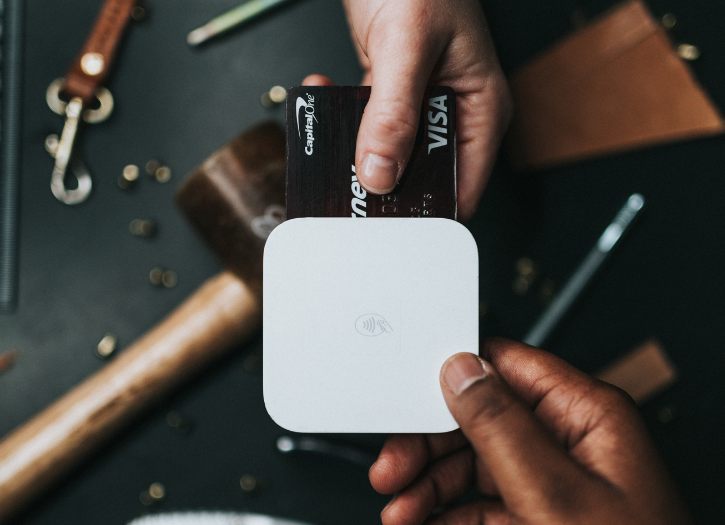The concept of using a card for purchases was described in 1887 by Edward Bellamy in his utopian novel Looking Backward.
Beginning in the late 19th century, charge cards came in various shapes and sizes, made of celluloid (an early type of plastic), copper, aluminum, steel, and other types of whitish metals. Some were shaped like coins, with a little hole enabling it to be put in a key ring. These charge coins were usually given to customers who had charge accounts in hotels or department stores. Each had a charge account number, along with the merchant’s name and logo.
The charge coin offered a simple and fast way to copy a charge account number to the sales slip, by imprinting the coin onto the sales slip. The Charga-Plate, developed in 1928, was an early predecessor of the credit card and was used in the U.S. from the 1930s to the late 1950s. It was a 2+1⁄2-by-1+1⁄4-inch (64 mm × 32 mm) rectangle of sheet metal related to Addressograph and military dog tag systems. It was embossed with the customer’s name, city, and state. It held a small paper card on its back for a signature. In recording a purchase, the plate was laid into a recess in the imprinter, with a paper “charge slip” positioned on top of it.
The record of the transaction included an impression of the embossed information, made by the imprinter pressing an inked ribbon against the charge slip. Charga-Plate was a trademark of Farrington Manufacturing Co. Charga-Plates were issued by large-scale merchants to their regular customers, much like department store credit cards of today. In some cases, the plates were kept in the issuing store rather than held by customers. When an authorized user made a purchase, a clerk retrieved the plate from the store’s files and then processed the purchase. Charga-Plates sped up back-office bookkeeping and reduced copying errors that were done manually in paper ledgers in each store.
In 1934, American Airlines and the Air Transport Association simplified the process even more with the advent of the Air Travel Card. They created a numbering scheme that identified the issuer of the card as well as the customer account. This is the reason the modern UATP cards still start with the number 1. With an Air Travel Card, passengers could “buy now, and pay later” for a ticket against their credit and receive a fifteen percent discount at any of the accepting airlines. By the 1940s, all of the major U.S. airlines offered Air Travel Cards that could be used on 17 different airlines. By 1941, about half of the airlines’ revenues came through the Air Travel Card agreement.
The airlines had also started offering installment plans to lure new travellers into the air. In 1948, the Air Travel Card became the first internationally valid charge card within all members of the International Air Transport Association.
Photo by Nathan Dumlao on Unsplash








Add Comment